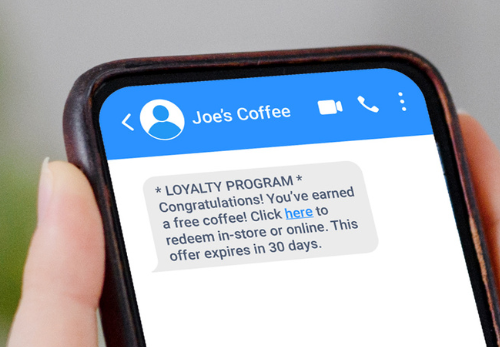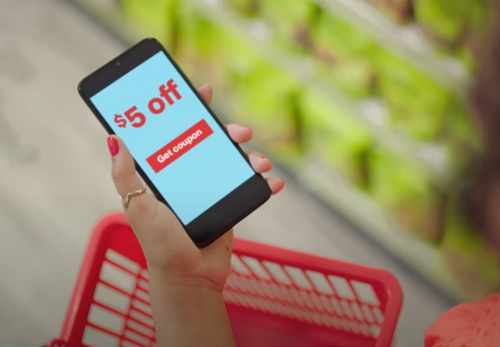Retail loyalty programs aren’t a cop-out for poor sales or a weak brand. They’re a useful tool for companies to identify, cultivate, and give special treatment to brand advocates. And, if you construct your loyalty program well, it can keep customers coming back again and again (sometimes daily). You can gain benefits through a few different kinds of loyalty programs including:
- Paid
- Points-based
- Tiered
- Value-based
- Hybrid
Almost all programs follow some basic rules to help get your customers to sign up and stay engaged.
Essential guidelines for your store rewards programs
Some of the best loyalty programs can create a sense of community while others can become so confusing that customers abandon them. The first objective, however, should be to create a great customer experience with every interaction.
That’s why it’s important to think through your brand, program, and customers’ wants. Unifying the in-store experience, online expectations, and customer service creates a smooth omnichannel experience. It also helps provide a single viewpoint for your IT, marketing department, and contact center agents. Follow some essential do’s and don’ts to outline what the experience should feel like.
Do make your loyalty program feel special, easy to join, and instantly rewarding
You want a loyalty program to be inclusive but still feel special. You can see this in the names of popular loyalty programs like Amazon Prime, British Airways’ Executive Club, and Sephora’s Beauty Insider Program. A well-branded, yet distinctive, loyalty program should make the customer feel like they’re joining an exclusive group.
Making customers feel special includes removing frustration. Design a sign-up experience that’s easy for customers. Getting to know a customer’s buying habits happens over time, so you don’t need to find out their favorite products right away. Keep enrollment simple by sticking to email or phone number, a basic question or two, and maybe their birthday.
Giving members a small reward right after sign-up helps confirm that they’ve made a good choice. Bonus points if there’s a visual representation of what rewards are upcoming and how soon. Even a small discount for becoming a member can be enough to get that next sale and build loyalty right away.
Don’t make your loyalty program complex, frustrating, or constantly changing
We’ve all put down our phone or closed a browser tab when things get too frustrating. Don’t let this be your customer loyalty sign-up page. Test different variations to make sure signing up for your program is foolproof:
- Remove complex or busy visuals
- Keep required information to a minimum
- Explain simply and thoroughly
- Text, email, or call customers to confirm signup according to their preference
In addition, maintain simplicity. It’s fine to test small variations of a program on small groups of customers, but don’t change the way your program works all the time. Too much change can get confusing. Your customers might stop using it if they’re not exactly sure how it works. You can tailor it to what your customers want and how your business works, though.
Types of retail loyalty programs and examples
It’s important to note that any system must be able to function across and on all platforms. If customers are loyally buying from you, they deserve their rewards whether they spend money in-store, on Instagram, or through your eCommerce store. So, make sure you can delight your customers wherever they choose to interact with you.
Leveling up, earning rewards, surprise birthday gifts – there are all kinds of ways to keep customers happy with your brand. Here are a few of the most popular retail loyalty programs and examples.
Benefits for a price – paid programs
Paid programs require more effort than other programs for the customers. They’re paying for the opportunity to earn rewards, so it’s important to show the value up front. Lower prices across your product selection or elevated customer service for the account show better value than other programs.
With REI’s notable loyalty program, you pay a one-time fee of $30 and reap the rewards for a lifetime. The rewards include special events, member discounts, and an annual member dividend. (DEFINITION 6, 2022)
Reward them with a points-based program
An extremely popular template for rewards programs is a points-based system. Customers make purchases, get points, and redeem them for rewards. Simple, effective, and – if you do it just right – fun for customers. Distilling this program down to its most basic would be something as simple as a punch card, though it can look and feel more sophisticated.
Nike has been recognized as the number one points-based loyalty program in 2022, with Nike stating, “member engagement has grown 27%, with repeat buyers up 50%.” (RIS News, 2022)
It’s easy for customers to spend on something they already like and consume daily or weekly. Adding an incentive that results in a free latte or guacamole reinforces the buying habit and creates a deeper loyalty to the brand.
Climbing to the top with a tiered loyalty program
Get your customers cheering like Rocky at the top of the Philadelphia Museum of Art’s stairs with a tiered program. Reward customers for spending a certain amount or making enough purchases. Reflect on what makes sense based on your merchandise and customer preferences.
Ulta’s Ultamate Rewards Program, which won accolades as one of the best loyalty programs in 2022, is points-based, it has a deeper level. (RIS News, 2022) As a customer spends more, they get more perks and accumulated points are worth more. After spending $500 in one year, points don’t expire. Or after spending $1,200 in a year, members get exclusive deals and early access to products. As customers spend more, they get better perks, and your company gains more loyalty.
Earn their hearts with a value loyalty program
Points, tiers, gamification. They can work wonders building customer loyalty. But, for some brands, there’s a better move. Value loyalty programs lean on customers’ emotions and personal ethics. When done right, value programs can not only create a strong loyalty program, but also create a strong sense of community.
The Body Shop’s Love Your Body Club is a great example. The Club is branded and focused on inclusivity. It is a point-based system, however, you can donate points to a charity of your choice (Drip, 2022) Their signup page states, “For every 100 points you earn, we’ll reward you with $10 worth to spend … or choose to help others by donating your rewards to charity.” (The Body Shop)
A la carte – using a hybrid for a customized program
With so many options and customer preferences to consider, you could mix and match to create a unique retail loyalty rewards program. Maybe a tiered program fits your business model, but there’s a big indication that customers are value driven. You could add an exchange option that lets customers trade points for cash donations to a charity that aligns with your brand and customers’ values.
Or perhaps infrequent purchases make a points-based model unsuitable for most customers, but they value exclusivity. A paid program could provide VIP access and cover the overhead cost of running your points program – everyone wins.
No matter what type or combination you choose, make sure your store rewards program fits your ideal customer and is easy to access – anywhere and anytime. To help communicate with and remind customers of rewards, use a reliable and secure omnichannel communications platform to keep your brand top of mind.
Do you want to learn more about modernizing your contact center and accelerating customer engagement with generative AI and automation? Schedule an AI and automation Customer Interaction Intent Study with IntelePeer now.

